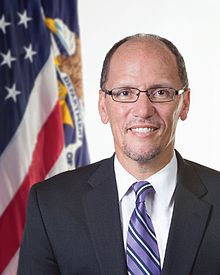
As Hispanic Heritage Month begins, I think about my immigrant parents – their pride in their Dominican roots as well as their fierce belief in and gratitude toward America. Because of their sacrifices and their hard work – and also because of investments that the nation made in me – I’ve enjoyed tremendous opportunities in my life.
When I was born in 1961, we were one of the few Latino families in Buffalo, New York – and there were only about 6 million Hispanics living in the entire United States. Today, there are about that many just in the Los Angeles-Long Beach, California metropolitan area and 53 million total nationwide. The size of the Hispanic workforce has more than doubled in the last two decades alone. Hispanic Heritage Month is the perfect time to reflect on the extraordinary contribution this growing community makes to our nation’s economic vitality.
The nation is bouncing back from the worst economic crisis of our lifetimes. Private businesses have created more than 10 million jobs over the last four and a half years. The unemployment rate is 6.1 percent, a substantial drop from a year ago.
But our challenge now is to make sure that prosperity is broadly shared and our economy works for everyone willing to work hard. Too many Hispanic families are on the outside looking in at the American Dream, unable to access sturdy ladders of opportunity or smooth career pathways.
Some of the data is promising — the Latino high school dropout rate, for example, was cut in half between 2000 and 2011. And thanks to the Affordable Care Act, millions more Latinos now have access to expanded health services. But there are still troubling opportunity gaps. The Hispanic community is still disproportionately uninsured. The Latino unemployment rate is still unacceptably high at 7.5 percent. Median weekly earnings for Hispanic workers lag well behind those of their white peers. One in four Hispanics lives below the poverty line, compared to less than one in 10 non-Hispanic whites.
That’s why we need to pick up the pace of growth and create more jobs, while also making sure hard work is rewarded with fair pay. President Obama continues to call on Congress to increase the national minimum wage to $10.10 per hour — one quarter of the workers who would benefit from that raise are Hispanic.
Austraberta Rodriguez is one of them. I had breakfast at her house in Houston last month. She’s been a janitor for 30 years, but she told me she’s still struggling to make ends meet on a minimum wage income. She’s a proud and dignified woman, who also has empowered herself by organizing with her fellow workers for better wages and benefits. But she needs Congress to act.
Austraberta has 14 grandchildren and two great-grandchildren, and they are our future. The median age of Hispanics in America is 27, a decade younger than the population as a whole. In 2024, it’s projected that 1 million Hispanics will turn 18. They are tomorrow’s workforce, entrepreneurs and job creators. The strength of our economy in the decades to come depends on investing in them, their skills and their education. Closing opportunity gaps isn’t just the right thing to do. It’s the only sensible strategy for a nation that wants to – and must – tap every available source of human capital. We don’t have a person to spare in America.
Diversity and pluralism are a uniquely American strength. Diversity – and in particular a dynamic and vibrant Latino community – is fact essential to 21st century American competitiveness and prosperity. So during Hispanic Heritage Month – and, really, every month of the year – let’s recommit ourselves to celebrating that diversity, to expanding opportunity for Latinos and investing in their future.
Tom Perez is the 26th U.S. Secretary of Labor.
This post originally appeared in the United States Department of Labor Blog

Recent Comments